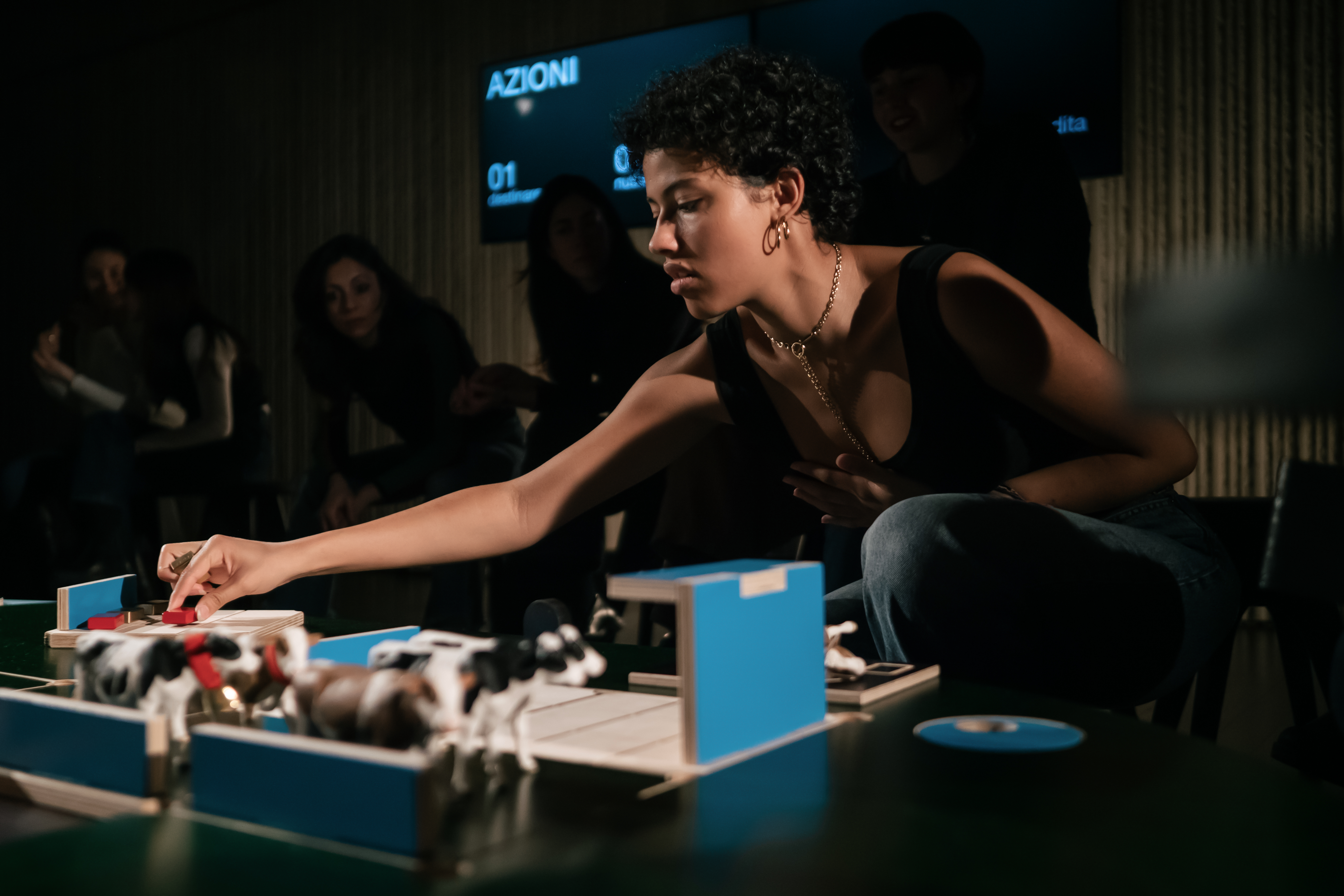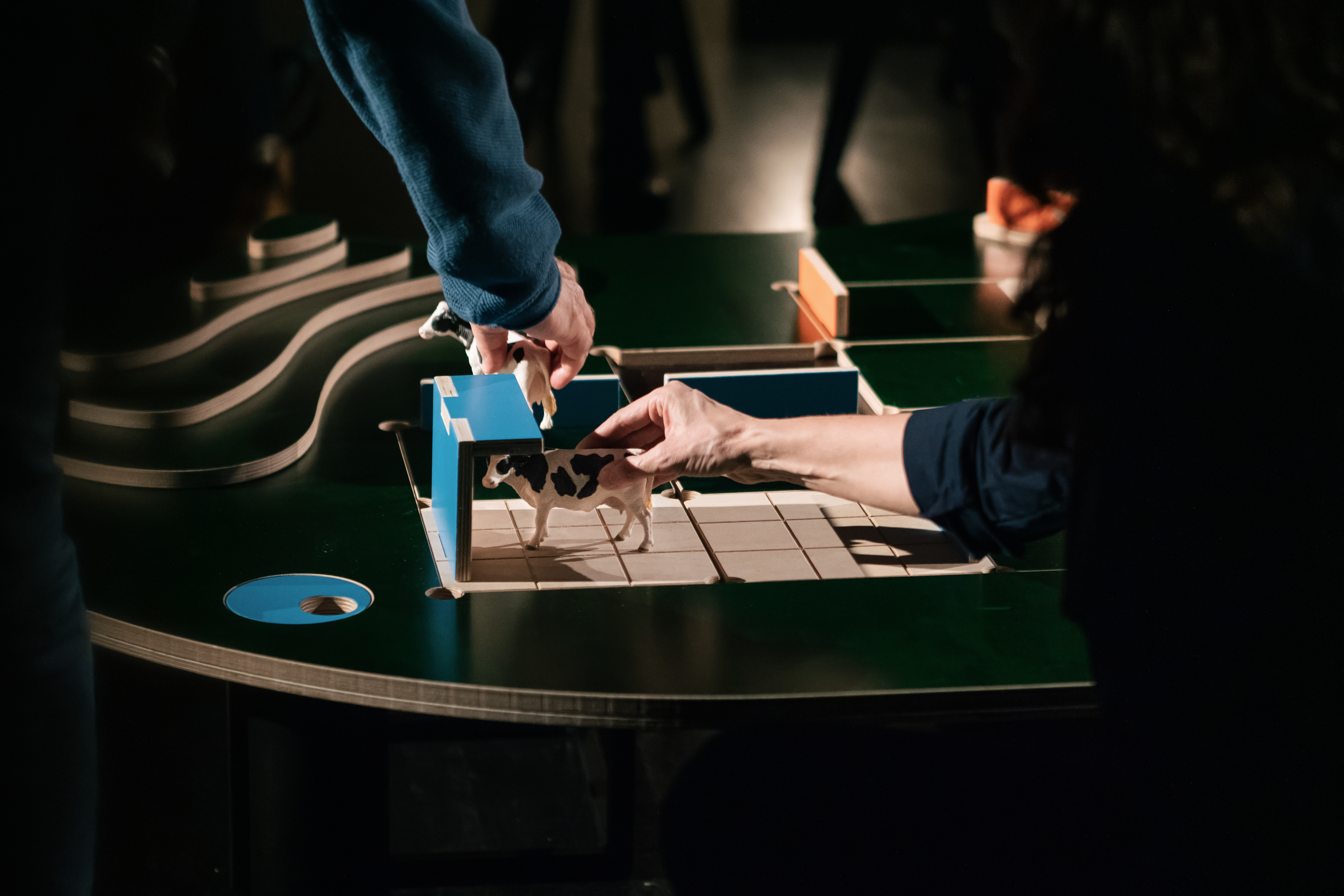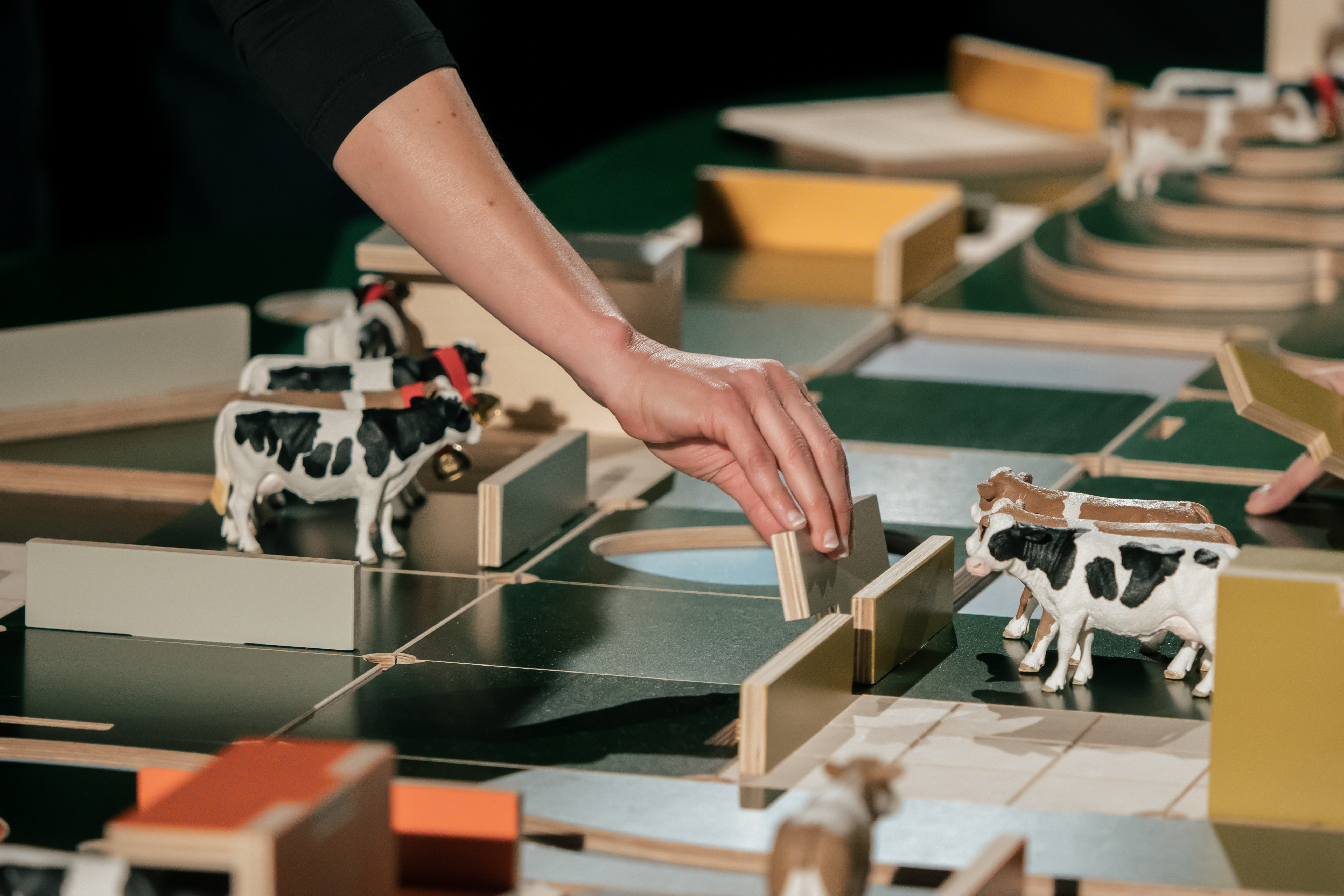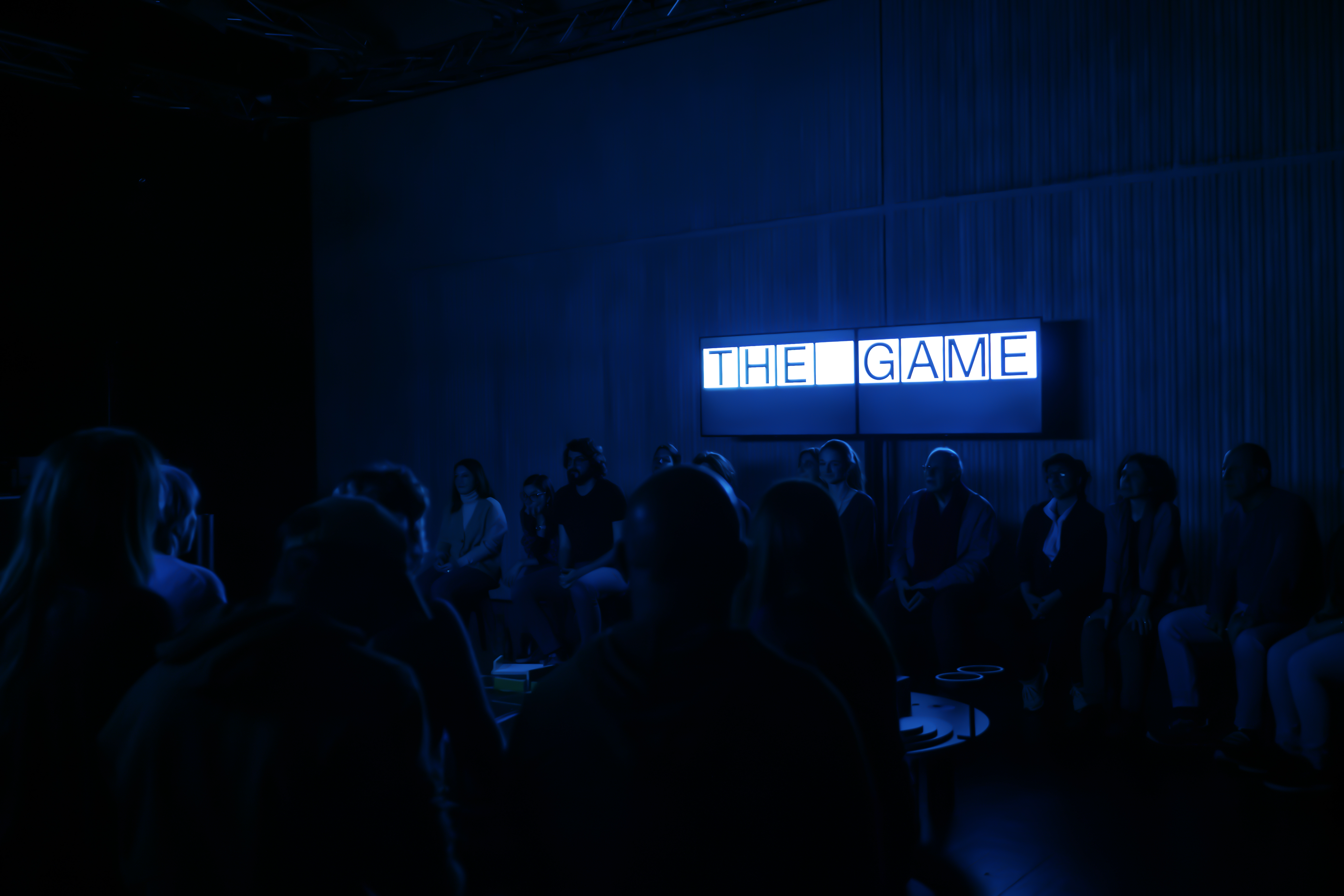Trickster-p
The game
The world as we have created it is a process of our thinking. It cannot be changed without changing our thinking.
Eutopia
The stories of the Earth have changed in nature and scale: we do not write stories to tell about the creation or the course of the world, but to avert its end.
Book is a Book is a Book
Ts'ui Pen must have said once: I am withdrawing to write a book. And another time: I am withdrawing to construct a labyrinth. Every one imagined two works; to no one did it occurred that the book and the maze were one and the same thing.
Nettles
At what age does one stop being an orphan? Who loses the father, let’s say at sixty, can he be defined an orphan? At ten yes – but at forty? (...)
Twilight
Choreography for the dying light
Sights
We met blind people. Some were born blind, others lost their sight over time. We asked them to tell us how they see
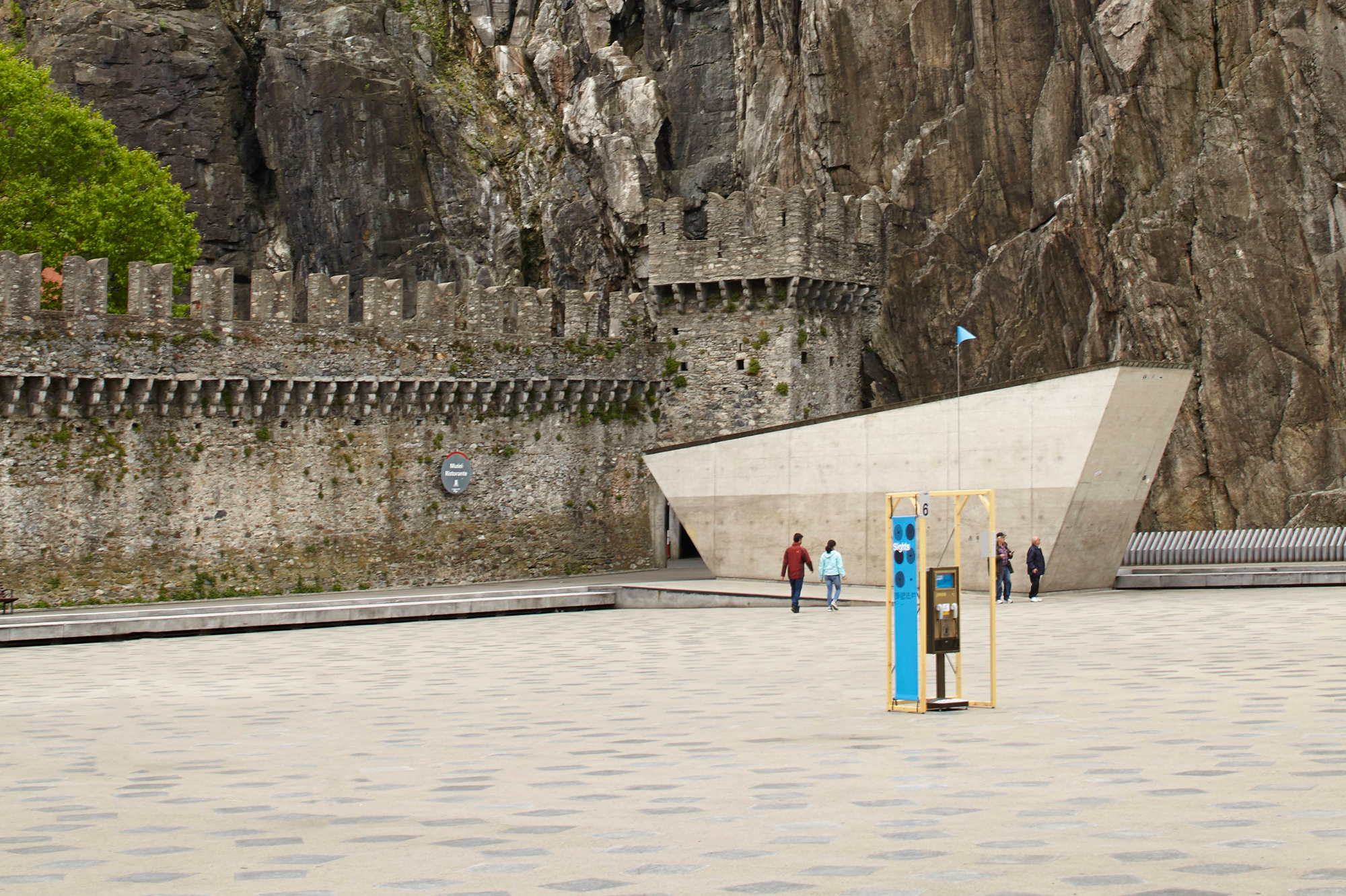
B
Room by room audio journey around the fairytale Snow White
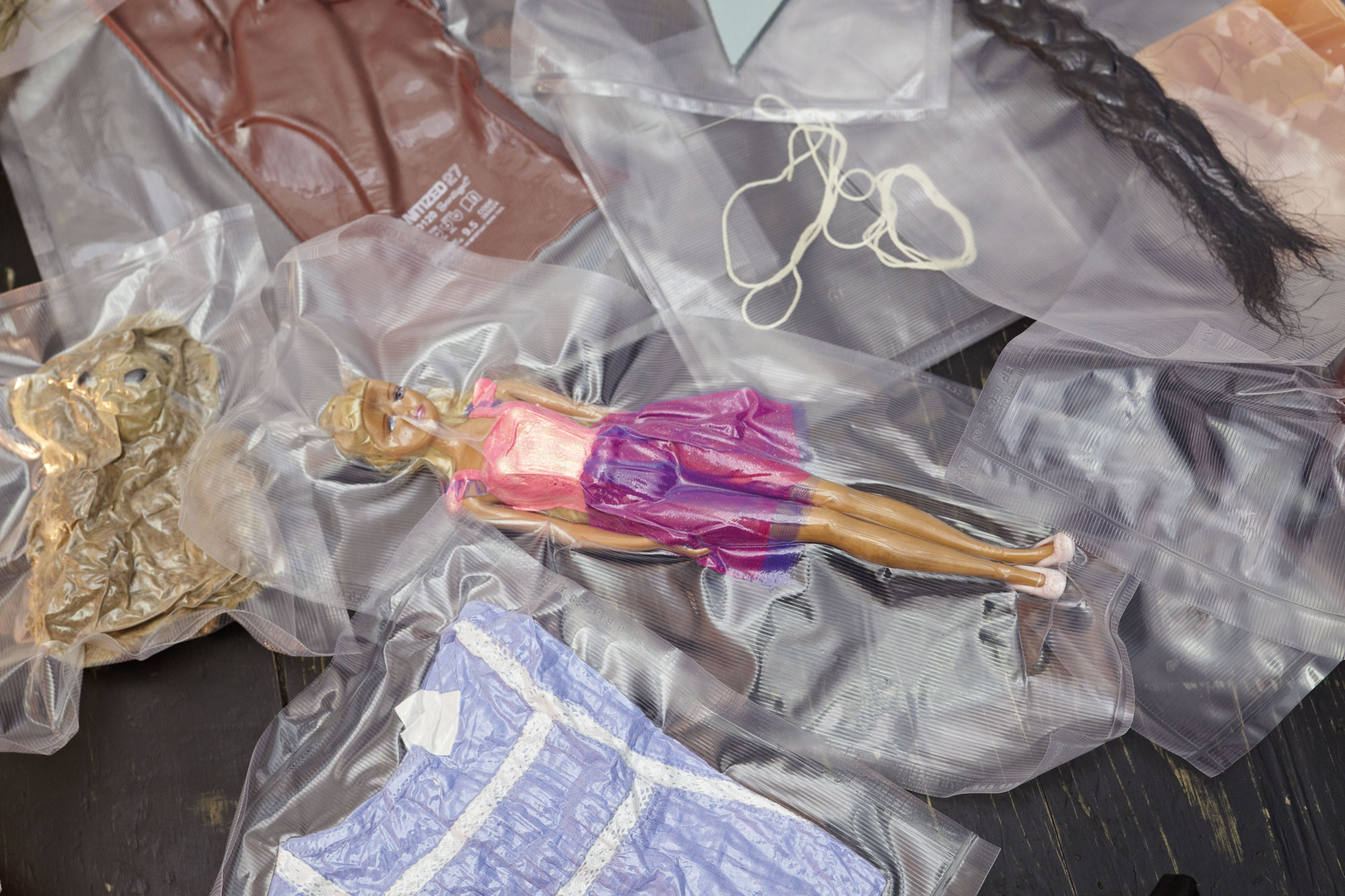
.h.g.
Installation in 9 rooms, one prologue and one epilogue
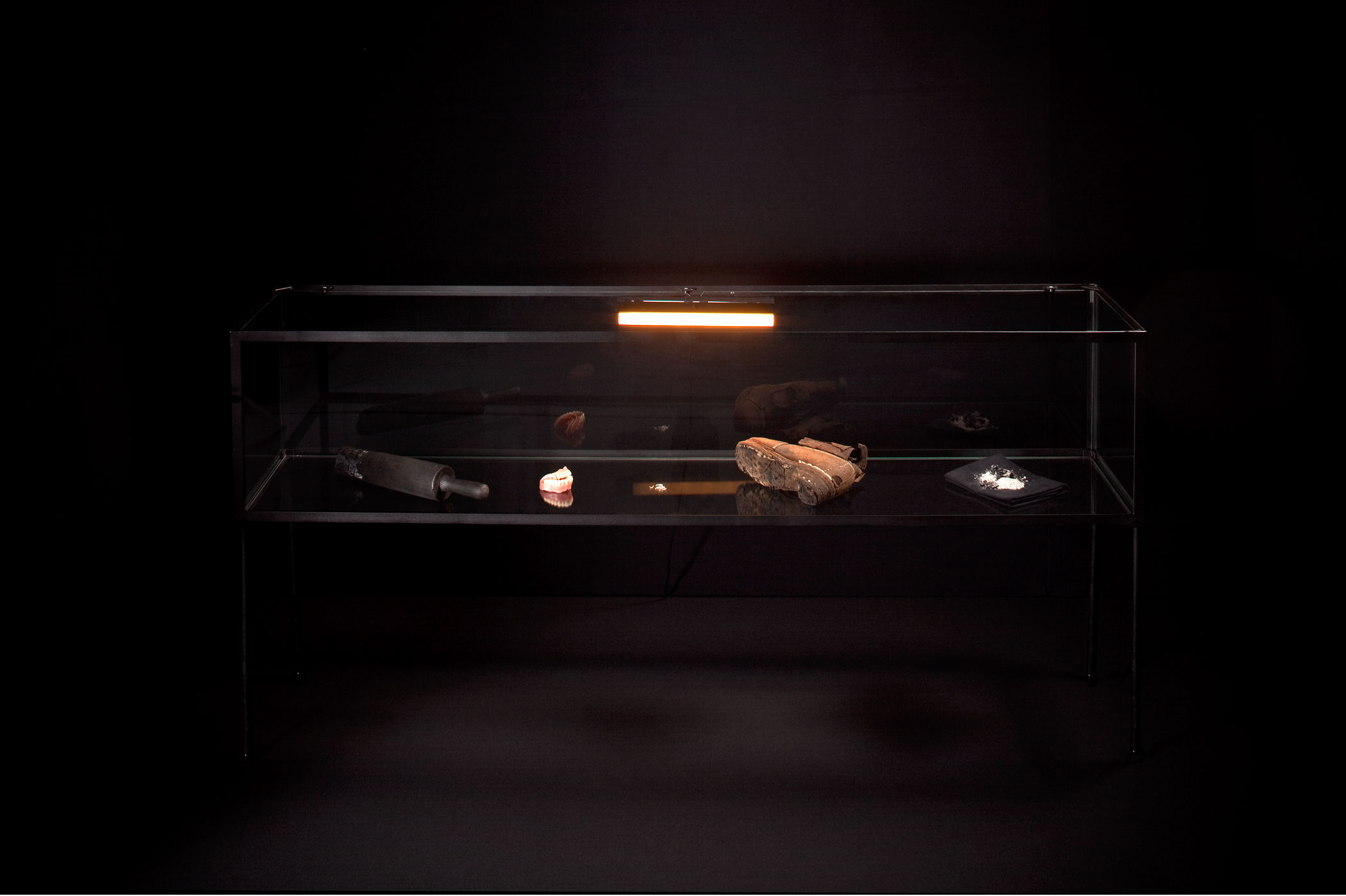
The game
Trickster-p — Projects — The game
After the positive feedback received by the Eutopia project, Trickster-p deepens and expands the research on games as potential art forms: The game investigates the relationship between performance, game and society. The leading question is what potential might be revealed in the creation of performative devices that focus on these very aspects.
Long perceived as trivial and irrelevant, games have struggled to achieve the same cultural prominence as “legitimate” art forms. Only in recent times philosophers, sociologists and anthropologists made them the subject of serious debates newly discovering their impact and value also in artistic terms.
Based on these reflections, Trickster-p creates a privileged space in which spectators can “play” the dynamics of complexity and, at the same time, build collective tools of possible changes.
The playground we are invited to interact with through The game is contemporary society itself and, in particular, its relationship with the organizational structures and economic dynamics on which it is based.
How much can we participate in the game of the system we are immersed in, or how much are we being played instead? To what extent do we have room for intervention and change through our choices?
If traditional theatre performances allow us to experience lives we have not lived, games allow us to experience new and unexpected forms of agency.
The game is a participatory and intergenerational project which not only advocates existing social and cultural positions but opens up spaces for possibilities to shake and transform them, showing how playing is (also) about questioning our own views and perspectives.
Credits
Creation
Concept and realization
Cristina Galbiati & Ilija Luginbühl
Artistic collaboration
Maria Da Silva, Yves Regenass
Associated game designer
Pietro Polsinelli
Sound space
Zeno Gabaglio
Graphic design, video and design consultants
Studio CCRZ
Photos and trailer
Giulia Lenzi
Production
Trickster-p, LAC Lugano Arte e Cultura
Co-production
Theater Chur, Theater Casino Zug, Theater Stadelhofen Zürich, ROXY Birsfelden, TAK Theater Liechtenstein, Triennale Milano Teatro
In collaboration with
Casa degli Artisti Milano
Supported by
Pro Helvetia – Swiss Arts Council
DECS Repubblica e Cantone Ticino – Fondo Swisslos
Città di Lugano
Comune di Novazzano
SWISSLOS/Kulturförderung Kanton Graubünden
Amt für Kultur Kanton Zug
Stadt Zug
Göhner Stiftung
Migros Kulturprozent
Landis & Gyr Stiftung
GKB BEITRAGSFONDS
Boner Stiftung für Kunst und Kultur
Stiftung Dr. Valentin Malamoud
Fondazione Agnese e Agostino Maletti
Stiftung Casty-Buchman – Chur/Masans
Fondazione Winterhalter
Press review
La Regione Ticino (Switzerland)
[…] The game is a theatrical experience that is both entertaining and complex, which has well-calibrated rules to thrill the participants and open up space for reflection on the kind of game we want to play, in theatre as in life.
Azione (Switzerland)
[…] A device that moves along sophisticated, submerged stylistic models, where the audience assumes a fundamental role in replacing the theatrical structure by recreating it through observations, decisions and participatory actions which become the very substance of the performance.

